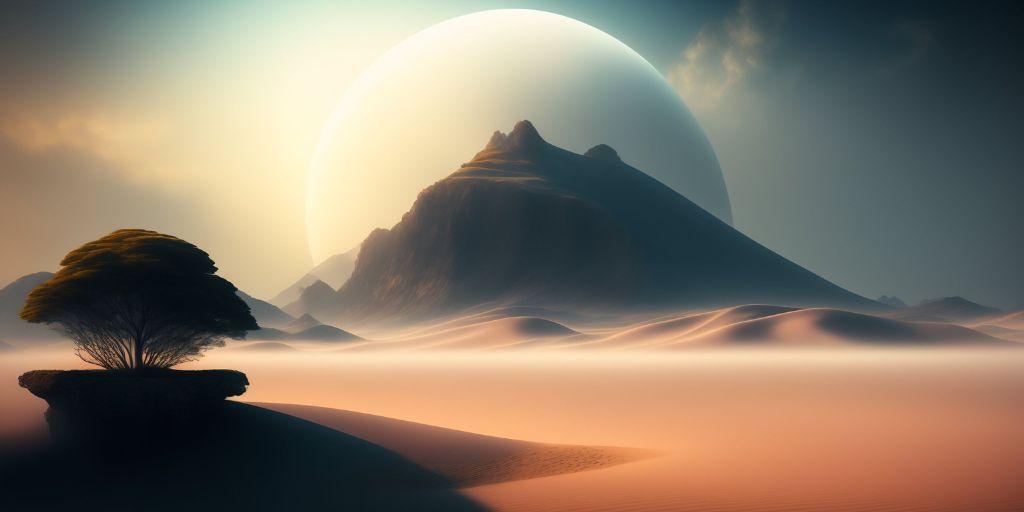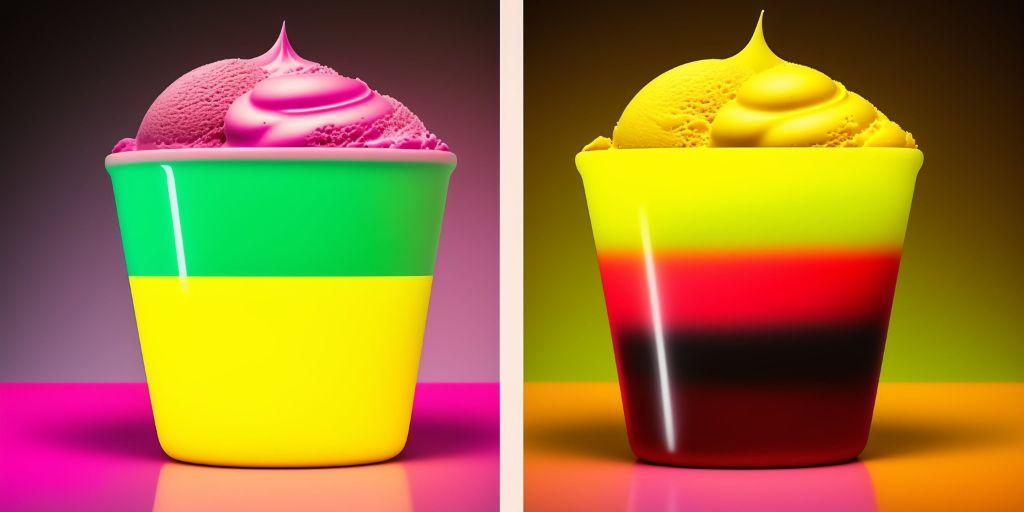I'm Miroslav, a passionate graphic designer, Etsy seller and AI enthusiast. At NechEmpire, I'm here to share my knowledge and skills. I want to turn...Read more
Art is an amazing way to show expression since the beginning of civilization.
It continues to be one of the most important elements of our culture from cave drawings to present-day sculptures.
However, with the advent of technology, a new form of art has emerged – AI-generated art.
AI art has the potential to revolutionize the world of traditional art. In this article, I’ll be looking at the subtleties between AI-created art and original artwork, and how they compare.
What is AI-Generated and Traditional Art?

First, let’s define what AI-generated art is.
AI-generated art is created using artificial intelligence, algorithms, and machine learning techniques.
It can be used to generate stunning visuals, melodies, and literature.
To get a new artwork, you just need to use something called a text prompt and the AI model will generate a design from your text inputs.
Traditional art, on the other hand, is created using physical materials such as paint, canvas, and clay, and often requires a high level of skill and technique.
Advantages of AI-generated art
There is no question about it: AI-generated art is revolutionizing the world of art.
By combining AI algorithms and machine learning, one can produce extremely high-quality artwork in a fraction of the time it takes for traditional artwork.
It is an amazing way to quickly and efficiently create an array of unique works!
This can be useful in commercial applications such as advertising or product design.
For example, companies don’t need to invest too much time and money to create eye-catching designs for their products or advertisements.
Another advantage of AI-generated art is its potential for increased creativity and experimentation. Machine learning and generative AI technology have revolutionized the field of art and made it possible to create completely unique and original pieces.
While AI art models are only as good as the data they are trained on, they can still help designers experiment with various styles and techniques.
Challenges of AI-Generated Art

Although AI art brings simplicity and efficiency, it does come with its own set of challenges. A major issue is the difficulty in capturing the intricate nuances of human emotion and interpretation.
Art is a reflection of our life journey, and it can be difficult for AI-made art to express the same emotions and intentions as conventional art.
While AI-generated artwork can be beautiful and unique in its own way, it does lack the depth and intricacy that come from heartfelt human experience.
Another challenge with AI-generated art is the copyright issue.
Artificial intelligence has opened up a new creative world to a wider audience, but the legal implications of copyrighting this type of art present an interesting challenge.
As I mentioned before, AI art models like Midjourney or Stable Diffusion are trained on real designs, artworks, or pictures. They can easily generate art using similar styles to those of Picasso, Andy Warhol, or Claude Monet.
So, the question here is, who owns the copyright to an AI-generated work?
Does the creator, the artist whose work has been used to train the model, or the algorithm have control?
These are just some of the questions that need to be addressed before we can fully embrace this new form of art.
Comparison of AI-generated Art and Traditional Art
Traditional art allows you to experiment with various materials, like paint and clay, which gives your artwork a unique physicality. On the other hand, AI art exists solely in the digital realm, making it more intangible and fleeting.
This can make it difficult for viewers to connect with the art on a deeper level.
AI can be amazing for developing unique art pieces, but it’s still important to get the human touch in all creations. Relying too heavily on technology may take away from the unique feel that only people can create in the artwork.
AI art can never replace the human touch and the emotions that come with creating something by hand.
When comparing AI-generated art and traditional art, there are several factors to consider.
One of the most subjective factors is the beauty and aesthetic appeal of the art.
Every individual has their own preferences when it comes to beauty, and this can include both AI-generated art and more traditional mediums. While there is potential for both forms to be gorgeous, beauty is ultimately in the eye of the beholder.
Another important factor to consider is the importance of technique and skill in both forms of art.
There is no denying that traditional art takes a great deal of skill and technique to come up with, while AI art largely relies on algorithms and ML.
However, it still produces unique and stunning works of art, albeit without the same level of expertise as found in classic pieces.
The modes of creation and interpretation also differ between AI-generated art and traditional art.
- With traditional art, an artist can create a masterpiece directly from their hands and modify it as they go along.
- On the contrary, AI artwork is developed using machine learning and algorithms which offer the artist less control over the final product.
Furthermore, traditional art enables us to give it a more personal touch as the artist’s craftsmanship can be seen in the final product.
In contrast, art generated with artificial intelligence may involve less personal interpretation since it is created by a machine.
Conclusion
AI artwork is a fresh form of expression that can be quite advantageous if compared to classic creativity.
It enables faster and more beautiful pieces to be produced and it may even reach levels of intricacy that would be difficult for human hands. On the other hand, capturing emotion in AI art might still need some work.
Despite the fact that AI art does not have the same physical or personal touch as traditional art, it has produced some remarkable pieces that have earned recognition in the art world.
Both types of artwork possess distinctive qualities, and each can convey its own artistic messages. and should be appreciated for what they are.
BONUS FOR YOU: Get the Digital Product Starter Kit and start building your own online business today.
Here Are Some of My Favorite Tools For Print-on-demand
As a graphic designer and POD seller, I’ve had the opportunity to discover different helpful products and tools that can be time-saving and make the process of creating your designs a bit smoother.
DESIGNS: Kittl (best for t-shirt designs), Vexels (for professional designs), Placeit (for unique product mockups)
AI IMAGE GENERATOR: Leonardo (best free account)
GRAPHICS: Creative Fabrica (cheapest marketplace), Envato Elements (more variety)
SELLING DESIGNS: Freepik (for beginners), Creative Fabrica (for advanced graphic designers)
SELLING LOW-CONTENT BOOKS – Book Bolt (budget option)
ETSY:
- Research – Alura (best), EverBee ( beginners), Sale Samurai (cheap)
- Fulfillment – Printul (beginners), or Printify (advanced).
Disclosure: Some of the links above may contain affiliate partnerships, meaning, at no additional cost to you, NechEmpire may earn a commission if you click through to make a purchase.

I'm Miroslav, a passionate graphic designer, Etsy seller and AI enthusiast. At NechEmpire, I'm here to share my knowledge and skills. I want to turn your design passion into a successful online business.
More Posts